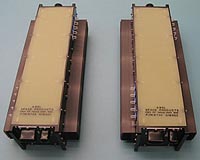 |
Stony Brook NY (SPX) May 12, 2009 Stony Brook University will be home to the new Northeastern Chemical Energy Storage Center (NOCESC), which involves a team of experimentalists and theorists at SBU (Clare P. Grey, Director and Peter Khalifah, in the Chemistry Department), Brookhaven National Laboratory (Jason Graetz and Xiao-Qing Yang), Rutgers, Binghamton University, MIT, Lawrence Berkeley National Laboratory, U. Michigan, Argonne National Laboratory, and U. Florida. "This award is a great example of the world-class energy research that is being conducted at Stony Brook University," said Dr. Shirley Kenny, Stony Brook University President. "Clare Grey is an outstanding scientist; she is to be congratulated for her successful efforts in collaborating with colleagues from other institutions in this critical area." "I am very excited by the opportunity to bring together a team of world experts at Stony Brook, Brookhaven National Laboratory and other leading US institutions to attack a series of key fundamental research issues that directly impact our ability to use lithium ion batteries in a wider range of applications - particularly in combination with new renewable energy sources and in the field of transportation," said Clare Grey, who will be leading the project. "At Stony Brook, in addition to synthesizing and testing new materials we propose to develop new diagnostic tools to determine how batteries function and why they sometimes fail, so as to use this information to help design the next generation of lithium ion batteries." The design of the next generation of lithium-ion batteries (LIBs) requires both the development of new chemistries and an in-depth fundamental understanding of the physical and chemical processes that occur in these complex systems. The specific goals of this new center are to develop a fundamental understanding of how electrode reactions in LIBs occur, and how they can be tailored by appropriate electrode design (doping, particle size, shape, composite structure, etc.), so as to identify the critical structural and physical properties that are vital to improving battery performance. The results from the joint experimental and theory program will be used to help design the next generation of battery materials. The center will also develop new experimental probes of structure and function that will be of use to the entire battery community. An emphasis will be placed on the development of in situ methods that use multiple experimental tools simultaneously or that combine imaging with spectroscopy, so as to understand how batteries function over multiple time and length scales. Share This Article With Planet Earth
Related Links Stony Brook University Powering The World in the 21st Century at Energy-Daily.com
 Virus used to strengthen lithium batteries
Virus used to strengthen lithium batteriesSeoul, April 3, 2009 Experiments with a virus known as M13 produced a lithium-ion battery 10 times stronger than those in use today, say scientists in South Korea. M13, a common bacteriophage, was used to produce nano-structured electrodes that gave lithium batteries more punch, said scientists at the Korea Advanced Institute of Science and Technology. The Korean scientists, working with researchers ... read more |
|
| The content herein, unless otherwise known to be public domain, are Copyright 1995-2009 - SpaceDaily. AFP and UPI Wire Stories are copyright Agence France-Presse and United Press International. ESA Portal Reports are copyright European Space Agency. All NASA sourced material is public domain. Additional copyrights may apply in whole or part to other bona fide parties. Advertising does not imply endorsement,agreement or approval of any opinions, statements or information provided by SpaceDaily on any Web page published or hosted by SpaceDaily. Privacy Statement |